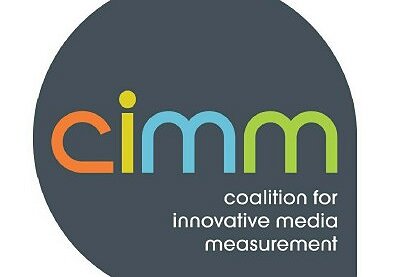BY CHARLENE WEISLER MEDIA INSIGHTS Q&A
 The quest for an open, industry standard method for content identification has moved one step closer with the recent announcement that the Coalition for Innovative Media Measurement (CIMM) and the Society for Motion Picture and Television Engineers® (SMPTE)® are joining efforts.
The quest for an open, industry standard method for content identification has moved one step closer with the recent announcement that the Coalition for Innovative Media Measurement (CIMM) and the Society for Motion Picture and Television Engineers® (SMPTE)® are joining efforts.
CIMM and SMPTE formed a study group in August 2013 which was charged with formulating an understanding of technologies and future standards requirements that could be applied to content identification. The study group found that there are technologies that can survive compression and distribution through the media and entertainment supply chain that bind media identifiers to content. The group also found that audio watermarking, rather than other techniques, is the most promising approach. This is an important step.
Following this, a drafting group was formed that is charged with undertaking the actual standardization of technologies for the open binding of IDs to essence, using the findings from the study group as a guideline.
What does this mean for the industry and for cross platform measurement? I sat down with CIMM’s Jane Clarke and asked her the following questions:
Charlene Weisler: How important is this announcement?
Jane Clarke: There is a plumbing level needed within the TV and video distribution ecosystem to enable accurate cross-platform measurement and more efficient and transparent media workflows. Moving to writing an open standard for binding identifiers to the essence of media content is a huge step forward for the industry and can enable industry participants to finally begin to communicate in the same language which will drive innovation not only for cross-platform measurement, but also for other automated innovation in digital TV such as dynamic ad insertion, programmatic TV ad buying and second screen synching experiences.
CW: What makes this different from other approaches?
JC: The media industry currently has no open, uniform method of content or ad identification that survives compression and distribution through the supply chain. Putting such an identification method in place is a critical next step toward the establishment of an interoperable standard for all professional video content that can be used throughout the entire media ecosystem.
CW: How will this impact how media is bought and sold?
JC: Standardizing the identification of assets will bring greater speed, efficiency, transparency and accountability to the tracking and reporting of audience viewing data, and enable communication and comparisons across a wide range of technology and measurement vendors. It could enable a wider range of metrics for buying and selling media, as well as the ability to introduce greater optimization in targeting audiences, creative and even pricing across an increasing range of video platforms
CW: Why is audio watermarking the most promising approach?
JC : Watermarking embeds a content or ad ID into audio or video content by altering the latter. It provides a positive and unambiguous identification of the content and allows two distinct programs with similar or identical audio or video content to be differentiated. Furthermore, extraction of a complete content ID is possible using a standalone detector without the need for an online lookup system.
CW: How has this announcement been received by the industry?
JC: Thus far, we have received a very positive response from the industry and have active participation from an excellent cross section of companies in the drafting group, which is responsible for writing the standard.
CW: Will this enable a proactive coding structure that codes future inventory before it airs?
JC: Both of the current managed identification standards (Ad-ID for ads and Entertainment ID Registry [EIDR] for content) can be embedded into the asset at the discretion of the asset owner. This could occur early in the life of the asset, so that the IDs can be used for content management and shared among all the technology and measurement vendors, from the creation of electronic program guides through to trafficking, distribution and audience measurement in consumer-facing devices.
CW: Who else is doing work in this space and how does it differ from this approach?
JC: The only other solutions that exist currently are proprietary. In this initiative, CIMM is collaborating not only with SMPTE, but also with the Entertainment ID Registry and Ad-ID, which is a venture of the 4A’s and the ANA. The new SMPTE Drafting Group also has an official liaison with ATSC, which is an industry group developing the next generation of broadcast TV, and has expressed interest in standardizing asset identification in that new standard. There are also plans to liaise with other relevant industry groups, such as and SCTE and CEA, and other media industry trade groups such as the IAB and the ARF.

